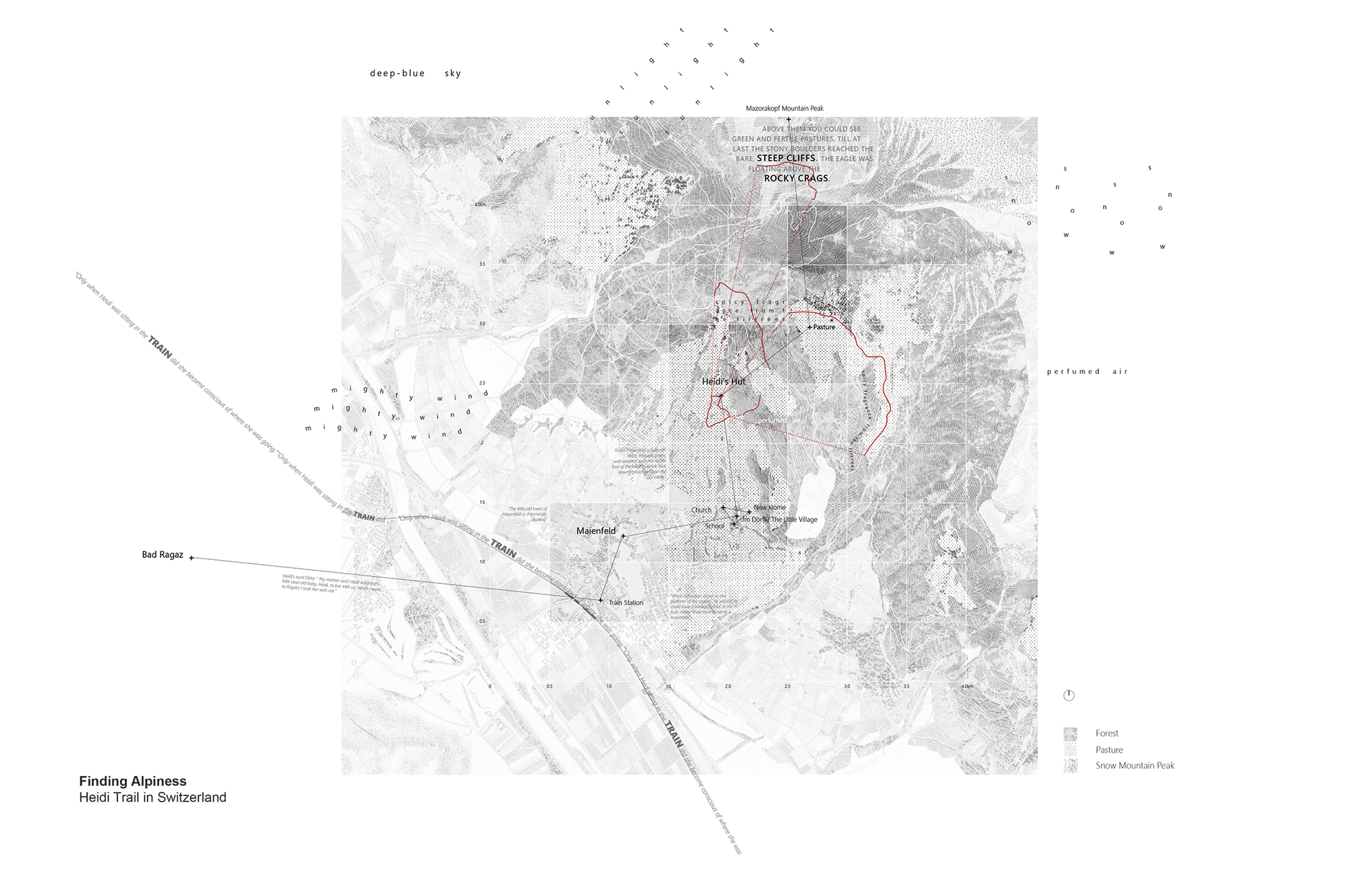LAN3016: Mediated Reconstructions
In Mediated Reconstructions, an option studio taught by Aisling O'Carroll, students explored reconstruction as a design tool for interrogating historical narratives. The studio focused on the Alps, a landscape that has been affected by artistic, political, and ecological forces over time.
Allison Smith
Allison writes: "Through an investigation of the Hallstatt Salt Mine, the construction of the Brine Pipeline, and a look at the site today, the Brine Pipeline Walk aims to make visible that which is not part of the UNESCO dialogue. This project aims to tell the story of the shaping of the Salzkammergut landscape via histories of extraction, one below and one above, heavily dependent on labour."
Blake Creamer
Blake writes: "My project explores photography as a method of producing narratives about landscape. It looks at how these objects or images can be mapped, manipulated, and redeployed back into the landscape to unpack and reframe historical narratives. The project looks at the photographs of Vittorio Sella (1859–1943) as narrative devices documenting the construction and inauguration of the highest structure in Europe in the late 20th century: the Regina Margherita Refuge. These images will be considered to generate a fragmented historical topography that both reflects and challenges the medium’s occupation of the 'territory of the unimagined, the earthbound, and the factual' (Snyder, 1994)."
Elif Ozcelik
Elif writes: "During postwar eras, dam construction became incorporated into the France's efforts at national reconstruction, industrialization, and modernization. This project explores how design — through the manipulation of landscape and planting on-site and through printed matter — may offer an alternative narrative of the nationalization of nature and naturalization of nation."
Lauren McLachlan
Lauren writes: "This project reconstructs through drawing and model the landscape depicted in chapters nine and 10 of Mary Shelley’s Frankenstein; or, The Modern Prometheus (1818). These chapters follow Frankenstein on his journey through the Alps, where he meets his monster at the Mer de Glace. The drawings are emotional reconstructions of the landscape, produced while reading the text. The models reconstruct key locations from the novel and from Mary Shelley’s own visit to Chamonix and the Mer de Glace in 1816, along with key environmental and historical events that shaped the author’s experience and perception of the landscape. These conditions are archived vertically through the ‘atmospheric core’ models."
Louisa Kennett
Louisa writes: "This project explores how time-space compression, resulting from innovations in travel infrastructure, has transformed the perception of alpine landscapes along the Gotthard Pass Route in Switzerland. The Devil’s Way seeks to reveal the route’s cultural heritage by proposing new ways of experiencing and engaging with the landscape."
Xueni Hu
Xueni writes: "The project explores 'alpiness,' described in the famous Swiss story Heidi — both Johanna Spyri’s novel and multiple Heidi film adaptations. The design work is trying to reveal the one-sidedness and fragmentation of Heidi’s version of the alpine landscape by proposing a new discontinuous Heidi trail."








































